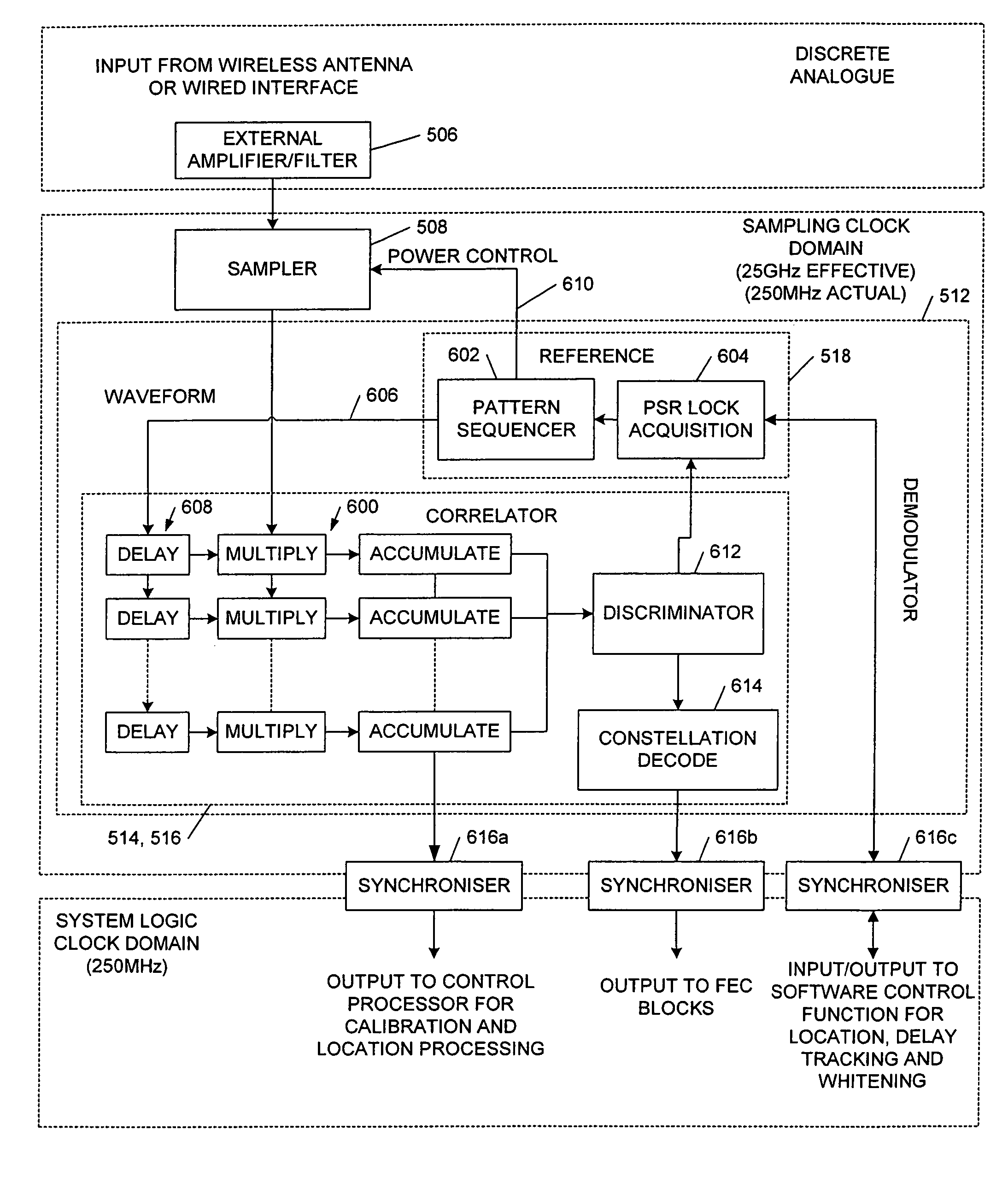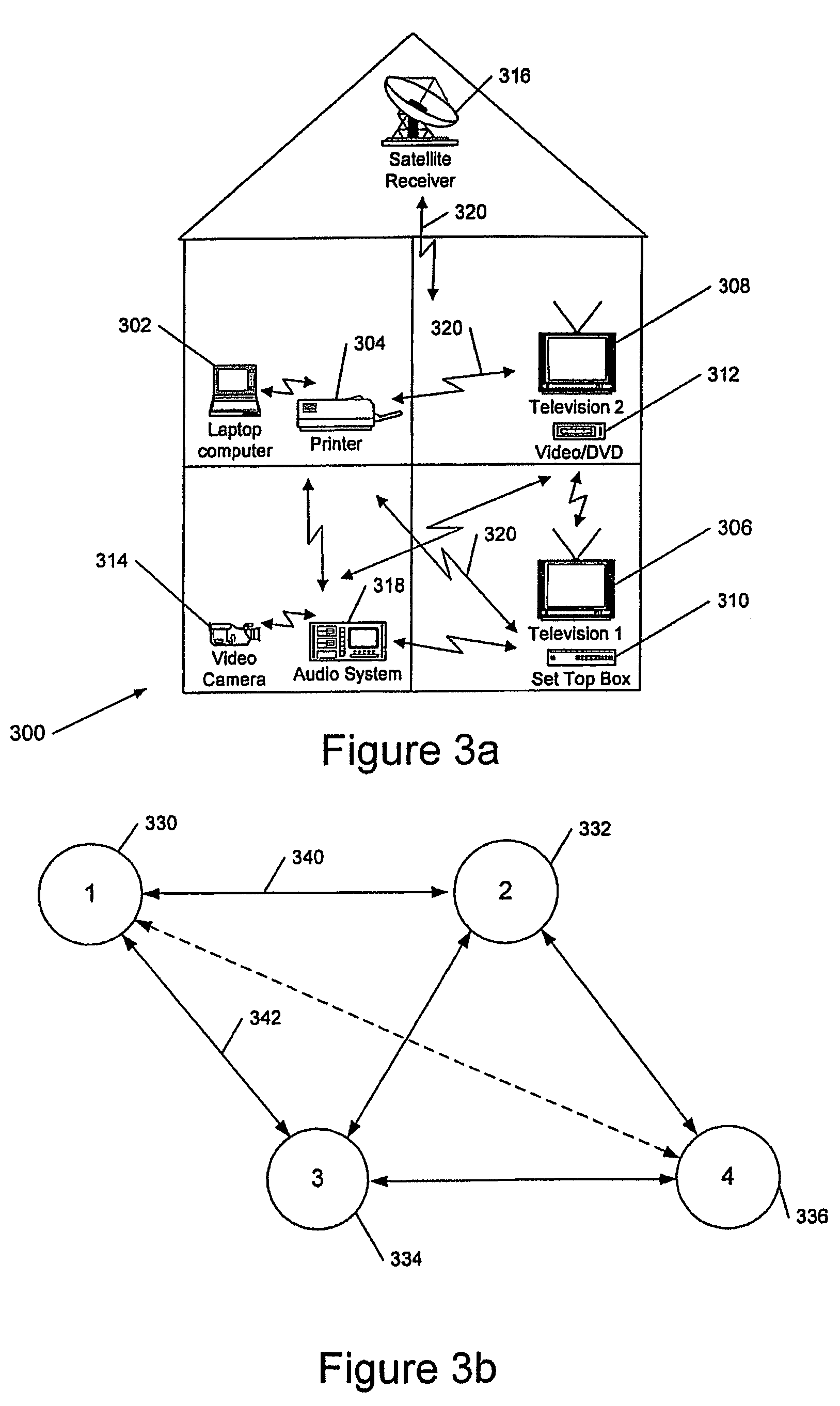Communications systems and methods
a communication system and optical data technology, applied in the field of wireless and wired optical data communication systems, can solve the problems of inter symbol interference (isi), increase in rate, etc., and achieve the effects of reducing the susceptibility of communicated data to systematic noise, reducing the susceptibility of communicated data, and reducing the sensitivity of the receiver
- Summary
- Abstract
- Description
- Claims
- Application Information
AI Technical Summary
Benefits of technology
Problems solved by technology
Method used
Image
Examples
Embodiment Construction
[0055]FIG. 1 shows an example of an analogue UWB transceiver 100. This comprises an transmit / receive antenna 102 with a characteristic impulse response indicated by bandpass filter (BPF) 104 (although in some instances a bandpass filter may be explicitly included), couples to a transmit / receive switch 106.
[0056]The transmit chain comprises an impulse generator 108 modulatable by a baseband transmit data input 110, and an antenna driver 112. The driver may be omitted since only a small output voltage swing is generally required. One of a number of modulation techniques may be employed, typically either OOK (on-off keying i.e. transmitting or not transmitting a pulse), M-ary amplitude shift keying (pulse amplitude modulation), or PPM (pulse position modulation i.e. dithering the pulse position). Typically the transmitted pulse has a duration of <1 ns and may have a bandwidth of the order of gigahertz.
[0057]The receive chain typically comprises a low noise amplifier (LNA) and automatic...
PUM
 Login to View More
Login to View More Abstract
Description
Claims
Application Information
 Login to View More
Login to View More - R&D
- Intellectual Property
- Life Sciences
- Materials
- Tech Scout
- Unparalleled Data Quality
- Higher Quality Content
- 60% Fewer Hallucinations
Browse by: Latest US Patents, China's latest patents, Technical Efficacy Thesaurus, Application Domain, Technology Topic, Popular Technical Reports.
© 2025 PatSnap. All rights reserved.Legal|Privacy policy|Modern Slavery Act Transparency Statement|Sitemap|About US| Contact US: help@patsnap.com



